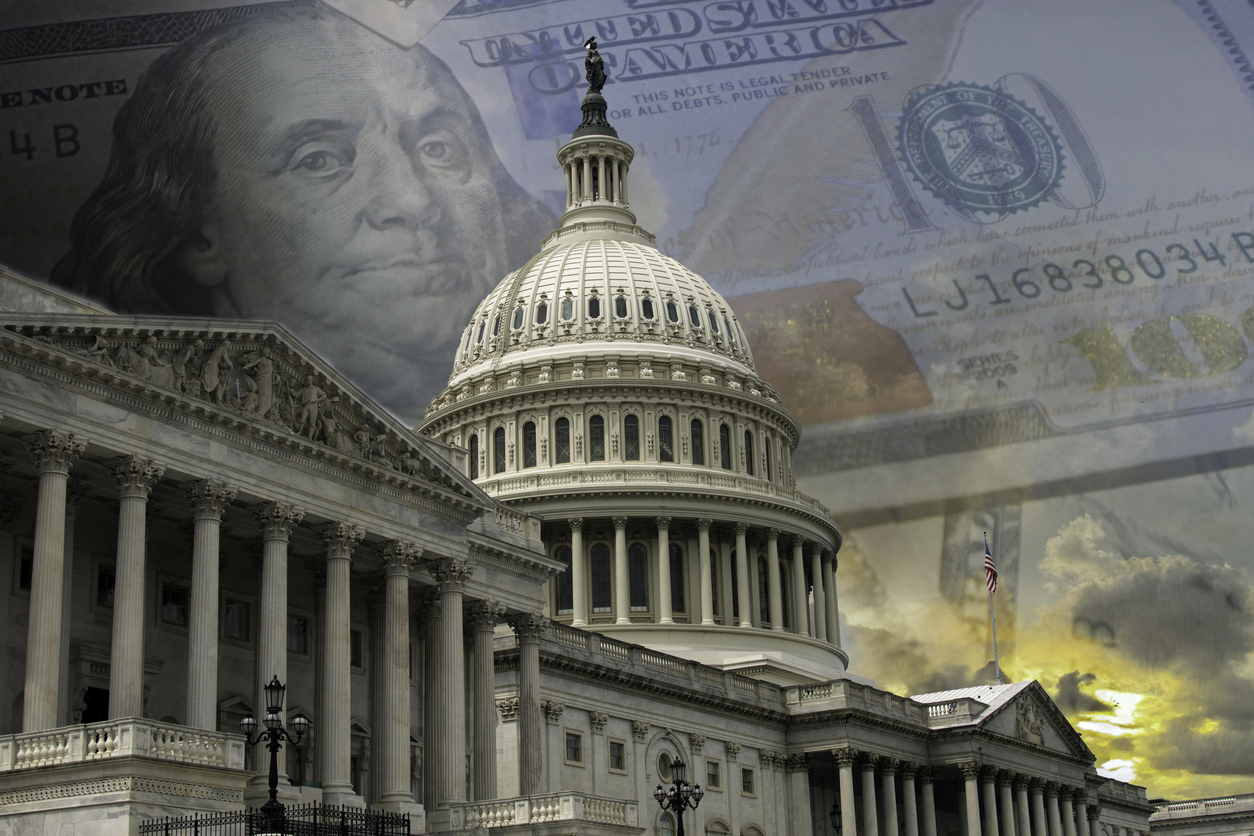Trade deals and stimulus: the key drivers for stock returns
We see stock markets moving higher, with trade deals
and government stimulus the two swing factors that investors need to watch.
Dear Investor,
In the past year, investors have had to grapple with trade wars, military conflicts, rate cuts and recession fears. Nevertheless, global stocks returned 17% in the past 12 months in USD terms1, compared to 20% p.a. returns over the preceding two years2.
Looking forward, however, is the much more important exercise for investors. The key question is what return should we expect, and what are the main risks to watch out for?
We believe equity markets are most likely to grind higher in the next 12 months, with returns picking up to longer-run averages in the coming years.
Let’s decompose our expectations for the next 12 months into the three drivers of stock returns - profit growth, interest rates and investor sentiment. Over this period, we expect solid profit growth to be the main contributor to stock returns. In turn, profit growth will be underpinned by moderate economic growth, which itself should be buttressed by trade deals and government stimulus in many countries around the world. In the US, higher interest rates will partly offset the contribution from profit growth and a pick-up in growth with the next six months seeing the removal of the 2½ Fed rate cuts currently priced into bonds. Finally, investor sentiment – which has been responsible for two-thirds of the rise in global stocks in the past couple of years – is likely to have a more neutral influence on stock returns. Put simply, the improvement in sentiment over the past couple of years has seen it reach a level where it is hard to see it rise any further.
Looking further ahead, profit growth should remain robust. Interest rates, which we expect to move higher in the next year, should drift back down, with this reduction acting as a tailwind to stock returns. With sentiment likely to be broadly steady, these three components should combine to accelerate stock returns to a level that long-term investors have become accustomed to.
While those are our base case expectations, the events of the past 12 months should highlight that there is more uncertainty than usual around our base case. Let’s go through the two largest investor debates.
Debate #1 – growth.
There are two swing factors to the growth outlook. The first is the outlook for trade deals, and this should be no surprise to investors after Trump’s 2 April “Liberation Day” tariffs caused so much uncertainty to the growth outlook. While we expect further toing and froing in trade negotiations, we see trade deals being signed. To be sure, the growth outlook is less rosy in a world with higher tariff rates.
We believe equity markets are most likely to grind higher in the next 12 months, with returns picking up to longer-run averages in the coming years.
However, an even worse outcome is one without trade deals, with businesses, consumers, governments and investors even more uncertain about their own outlooks. As such, it’s in everyone’s self-interest to create trade deals, even if they’re imperfect. We expect this to happen, with the more powerful economic blocs (Europe, China) being in a stronger position to get what they want from the US. Accordingly, these trade deals will likely take longer. The second swing factor is government stimulus. The range of outcomes here is narrower, with the US poised to pass a modestly stimulatory budget. There is already stimulus coming out of Europe, with governments choosing to increase their defence spending as the US tilts its defence spending towards East Asia.
 Debate #2 - interest rates.
Debate #2 - interest rates.
We expect these to move higher, particularly in the US, as the growth outlook strengthens as just described. Importantly, our analysis suggests that the rise in US 10-year bond yields will be moderate for a couple of reasons. The first is that starting points matter, and it is 4½%, not the historically low 1½% in 2022, just before bond yields marched higher. The second is that we expect investor concern about the creditworthiness of the US government to be short-lived. While the US no longer enjoys the highest credit rating, it still has the power to tax the largest, most dynamic and innovative economy on Earth, with its economy also possessing the largest, deepest and broadest financial markets. Perhaps most importantly, US property rights are robust and are unlikely to be tested by the government. To be sure, ever-rising government deficits must be funded, and occasionally bond investors will fret about whether this will occur at prevailing interest rates.
Over time, we see the Fed, alongside other major central banks, increasingly using their balance sheets to finance their government deficits to put a lid on borrowing costs. By its very nature, this will be inflationary, but if done on a limited scale and in a judicious manner, the contribution to inflation will be minor. Perhaps most importantly, it will not be easily traced back to the central banks, ensuring that the attention of investors remains on profits rather than interest rates. This is important because profits are the most important driver of stock returns.
All up, global stock markets appear set to continue their upward trajectory. Naturally, this will not occur in a straight line as there are certain to be fresh surprises and shocks. When these occur, we encourage investors to robustly assess the impacts on profits, interest rates and sentiment.


Arvid Streimann, CFA
Head of Global Equities and Portfolio Manager
1 1 July 2024 - 30 June 2025 MSCI World USD Total Returns
2 1 July 2022 - 30 June 2024 MSCI World USD Total Returns
Image Source: iStock
